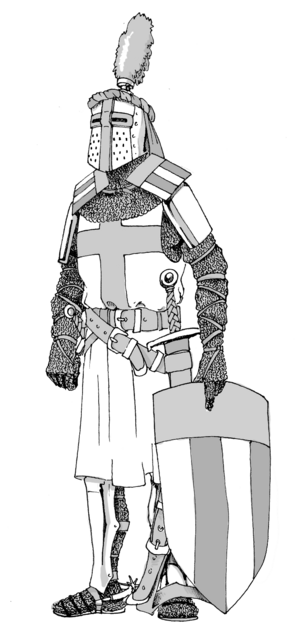Surcoat facts for kids
A surcoat, or surcote, was an outer garment commonly worn in the Middle Ages by men. About 100 years later, women started to wear surcoats. It can either mean a coat worn over other garments or the outer garment commonly worn over armour. The name comes from the French meaning "over the cotta", a long, wide coat reaching down to the feet without sleeves.
Starting about the 12th century, knights wore long and flowing surcoats over their armour. They would often show the coat of arms of the wearer. A knight's surcoat reached almost to the ankles. It had slits (cuts) in the bottom front and back so a wearer could sit. It also had no sleeves. One purpose for the surcoat was to protect armour from the rain. Another use was during the Crusades to keep the armour cooler in the sun.
By the middle of the 14th century the long surcoat was replaced with the "Jupon" (or "Gipon"). This was a much shorter garment, which was often padded for extra protection. Once suits of plate (solid) armour became common, the surcoat was no longer used.
Related pages
Images for kids
-
Saint Stephen, King of Hungary with a jupon bearing his arms, white and red stripes. Image from the Hungarian Illuminated Chronicle
See also
 In Spanish: Sobreveste para niños
In Spanish: Sobreveste para niños




